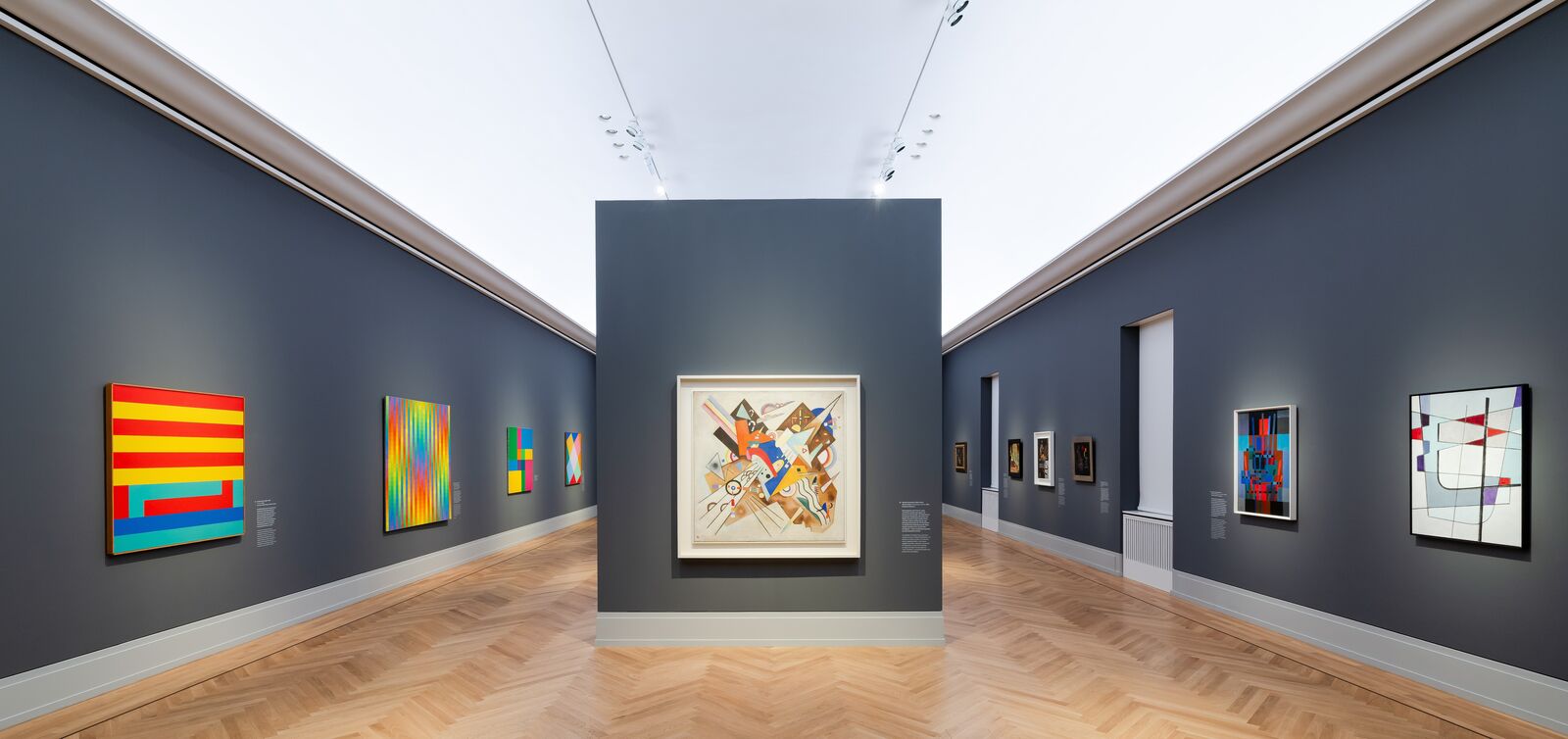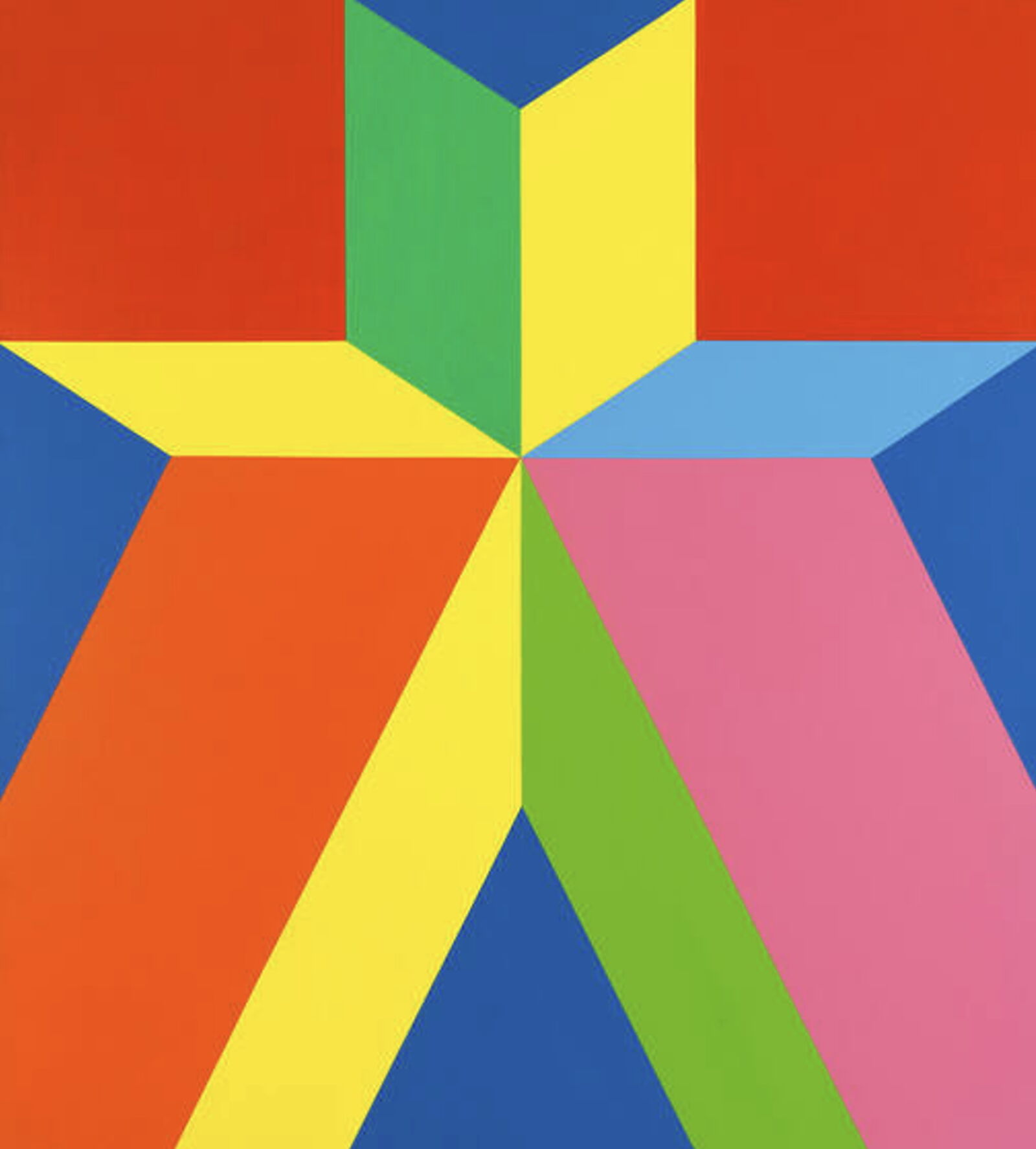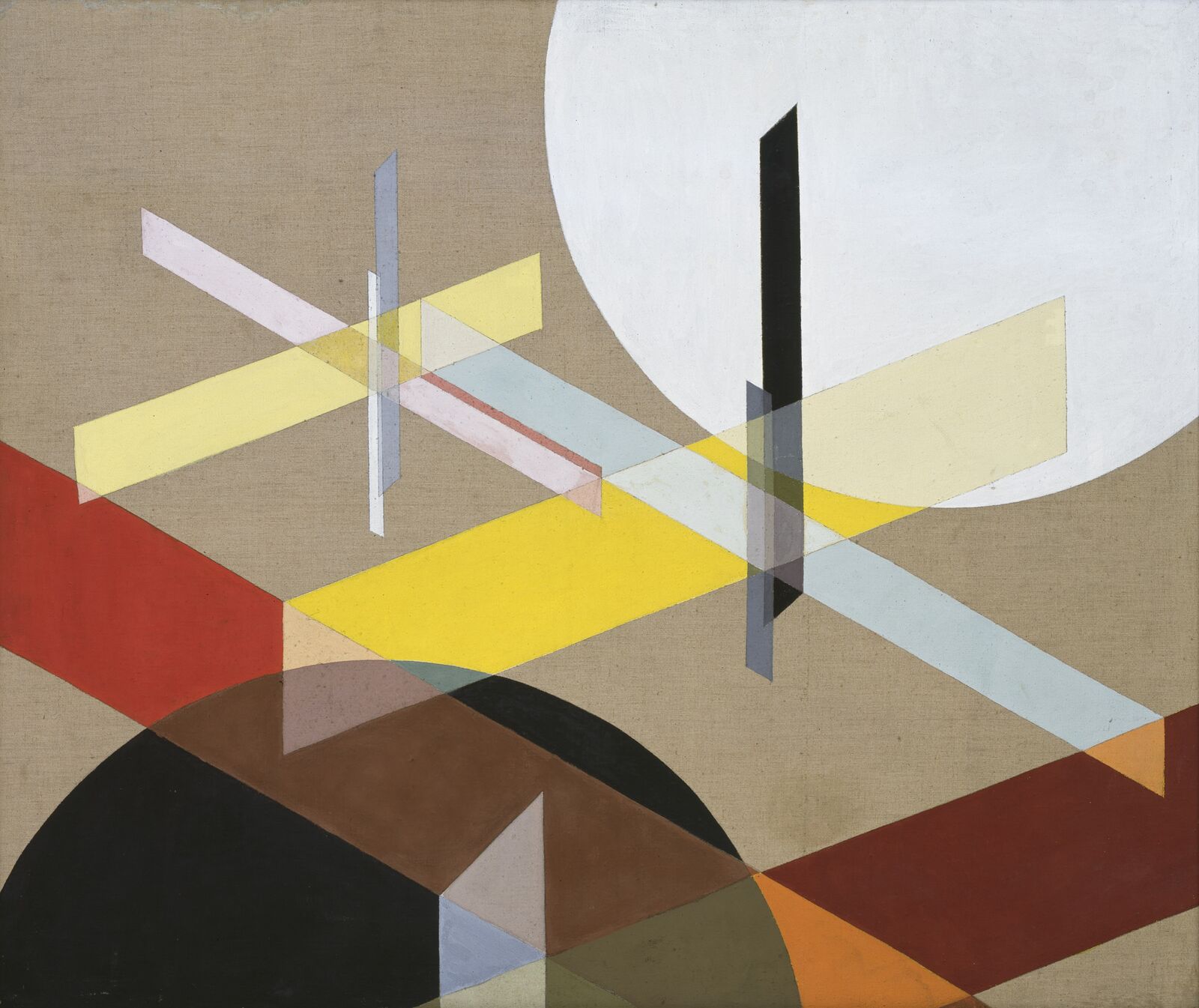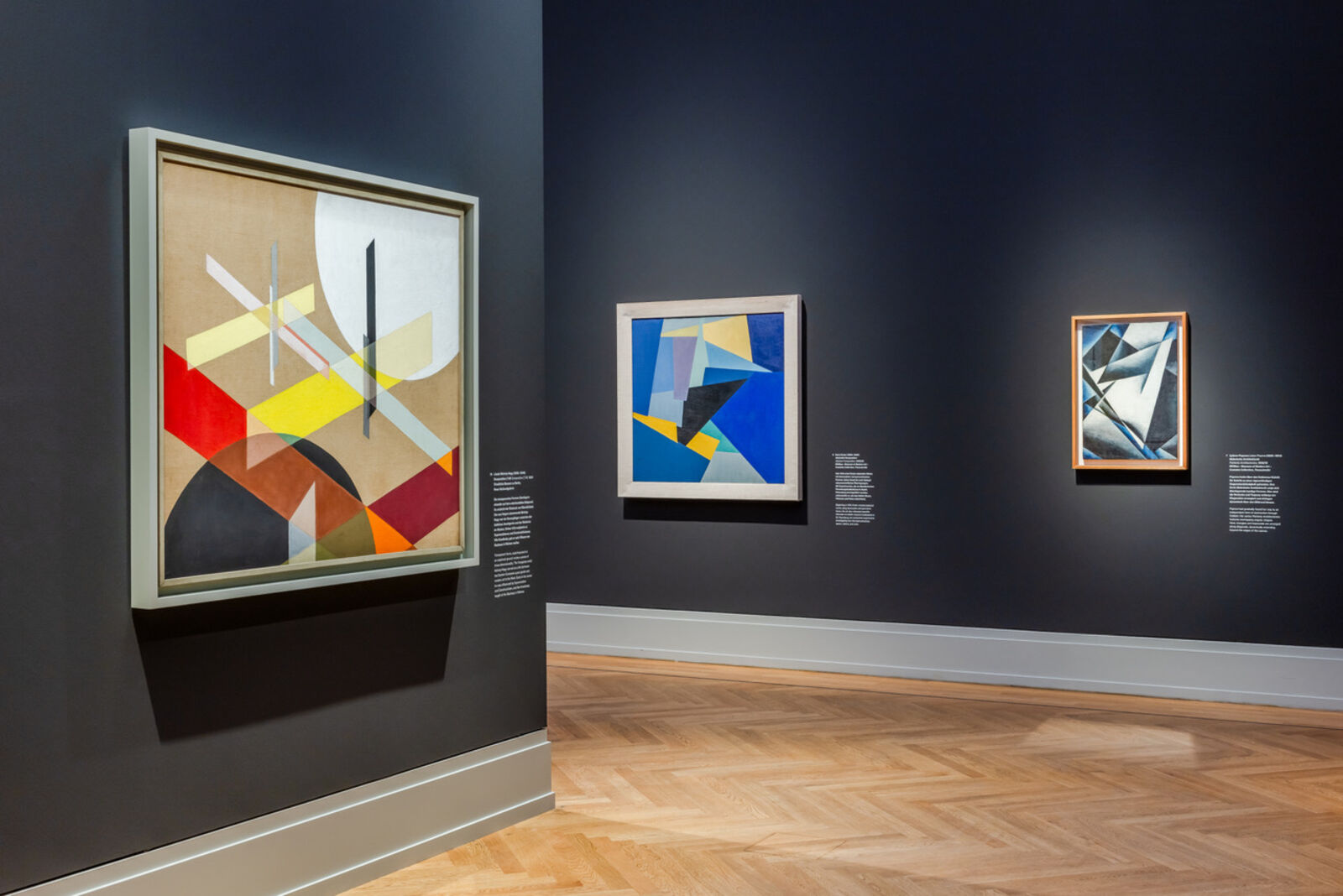
Kandinsky’s Universe: Geometric Abstraction in the 20th Century
At the beginning of the 20th century, painting underwent a profound transformation. Artists no longer wanted to depict the visible; they aspired to a new visual language that reduced artistic expression to an interplay of colors, lines, and shapes. Geometric Abstraction viewed these elements as a visual language that reflected the modern world and transcended national boundaries. Kandinsky’s Universe: Geometric Abstraction in the 20th Century spans six decades and showcases how Geometric Abstraction found radical expression in all its variations in Europe and the USA.
Inspired by the advanced technologies and theories of their time, including concepts of the fourth dimension and the space-time continuum, artists expanded their understanding of space and time. With images of geometric shapes floating in indefinite space, they sought to represent cosmic themes and higher spiritual levels. A central figure of this art movement was Wassily Kandinsky, who laid the theoretical foundations with his work Point and Line to Plane.

Private collection
Wassily Kandinsky: Top and left, 1925

Whitney Museum of American Art, New York; Purchase, with funds from Mr. and Mrs. Harry Kahn
Miriam Schapiro. Jigsaw, 1969
Wassily Kandinsky (1866–1944) was one of the first painters to explore abstraction. By tracing the stations of his life and the different phases of his abstract oeuvre, the eight chapters of the exhibition survey the most important stages of geometric abstraction.
“The title Kandinsky’s Universe is an apt description of our concept: it refers first of all to the incredibly diverse artistic environment in which Kandinsky worked and which he decisively influenced throughout his life. After Kandinsky’s death in 1944, European exiles brought his ideas to the United States, where Hard Edge painting and Optical Art emerged. But all of these currents also shared an intense interest in the use of painterly means to represent space. Artists were fascinated by the scientific and technological discoveries of their day, and they wanted their art to express new experiences of space and time. In this respect, too, Kandinsky was a pioneer.” - Sterre Barentsen, Curator

Staatliche Museen zu Berlin — Neue Nationalgalerie
László Moholy-Nagy: Composition Z VIII, 1924

Kunsthaus Zürich; Gift from Hans Arp, 1958
Sophie Taeuber-Arp: Twelve Spaces with Planes, Angular Bands, and Laid with Circles, 1939
The exhibition features 125 works by over seventy artists, including Josef Albers, Sonia Delaunay, Barbara Hepworth, Wassily Kandinsky, El Lissitzky, Agnes Martin, Piet Mondrian, Bridget Riley, Frank Stella, and Victor Vasarely. The more than thirty international lenders include the Courtauld Gallery in London, the Whitney Museum of American Art and the Solomon R. Guggenheim Museum in New York, the National Gallery of Art in Washington, the Fondation Beyeler near Basel, the Fondation Gandur pour l‘Art in Genève, and the Peggy Guggenheim Collection in Venice.
View of the exhibition
Media Partners
ARTE
Süddeutsche Zeitung
Tagesspiegel
Potsdamer Neueste Nachrichten
radio3
monopol
tip Berlin
Yorck Kino
The Berliner








